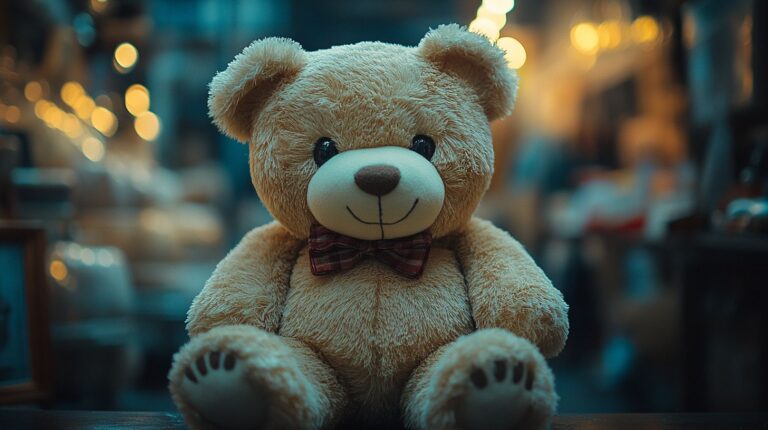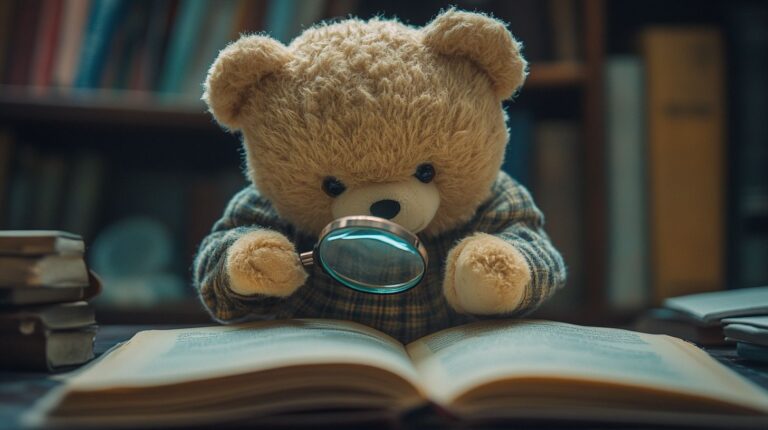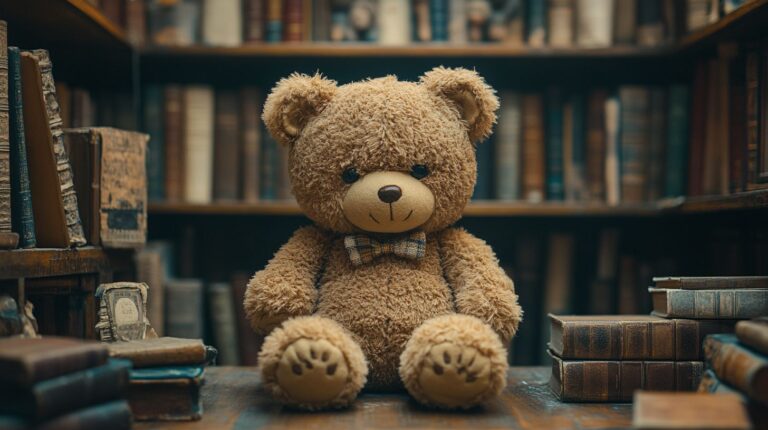Building a lovely teddy bear collection needn't cost the earth – there are brilliant bargains to be had if you know where to look. I've found some absolute gems in charity shops, particularly those in posher areas where folk tend to donate quality pieces like Merrythought and Steiff bears.
The early bird catches the worm at jumble sales and house clearances. Pop along first thing with a decent torch – you'd be amazed what treasures lurk in shadowy corners. Mind you, always give potential purchases a thorough once-over. Check the labels, wiggle the joints about, and keep an eye out for moth holes or other nasties.
Whilst some bears might need a bit of TLC, basic mending skills go surprisingly far. The collecting community's rather friendly too – local Facebook groups are brilliant for swapping duplicates and sharing tips about upcoming sales. Sometimes the best finds come through word of mouth.
I rather enjoy the thrill of the hunt, really. There's something quite special about rescuing a threadbare old bear and giving it a new lease of life without spending a fortune. Best of all, every bear has its own story to tell.
Key Takeaways
Treasure Hunting for Teddies: A Thrifty Guide
The January sales are brilliant for finding pre-loved bears, especially in charity shops around posh neighbourhoods. It's amazing what people clear out after Christmas – I've spotted some proper gems tucked away on shelves between old paperbacks and bric-a-brac.
Weekend estate sales can be absolute gold mines if you're willing to get up at the crack of dawn. Don't forget to pack a torch, as the best bears often lurk in dusty wardrobes and attics. Mind you, it's worth braving the cobwebs – I once found a lovely 1950s bear for a fiver!
While trudging round car boot sales can be hit-or-miss, local Facebook groups are rather good for spotting bargains. Serious collectors often post their spare bears at decent prices, and you might stumble across someone clearing their nan's loft.
At flea markets, start your haggling at about 60% of the asking price – most stallholders expect a bit of friendly negotiation. Keep your eyes peeled for those telltale old labels, particularly on vintage bears. Some tatty-looking ones can be proper treasures underneath.
With a bit of patience and basic mending skills, you can breathe new life into tired teddies. A gentle wash, some careful re-stitching, and a good brush can work wonders. Just remember to check if it's actually valuable before giving it a bath – some bears are worth more in their original state, dust and all!
Research Common Teddy Bear Brands
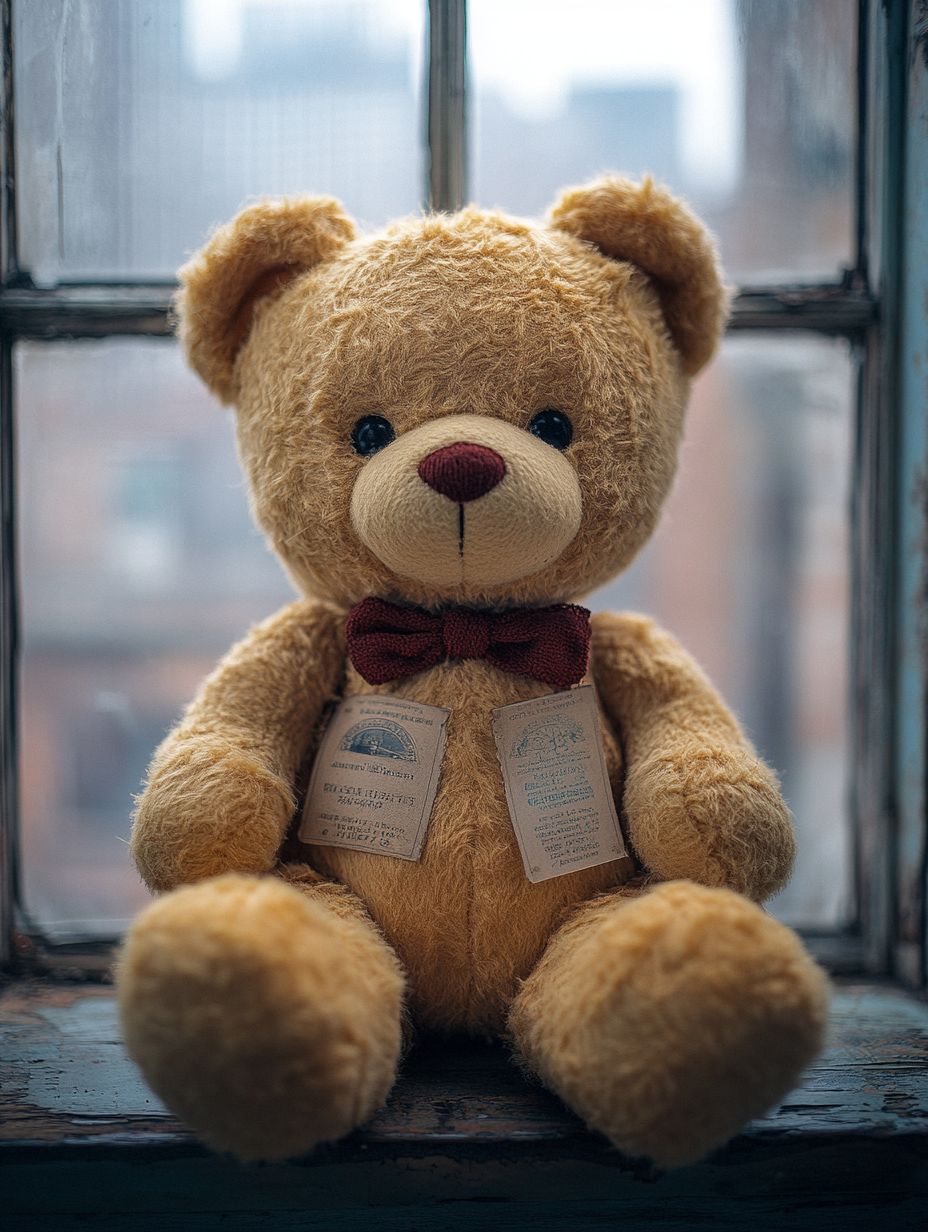
Thinking of starting a teddy bear collection? It's worth getting to know the main players in the cuddly toy world. Gund, Steiff, Aurora and Build-A-Bear Workshop each bring something rather special to the table, though they couldn't be more different from one another.
Gund bears are properly lovely things – all soft and squashy with those sweet round faces that just make you want to hug them. They're not terribly dear either, usually £15-£40 new in the shops, though you can pick up pre-loved ones for next to nothing at car boot sales.
Now, Steiff is quite another kettle of fish – frightfully expensive usually, being properly German and terribly well-made, but they do have some more reasonably priced ranges if you keep your eyes peeled. Aurora makes perfectly decent bears at fair prices, and Build-A-Bear Workshop teddies often turn up second-hand in brilliant condition.
Fancy something closer to home? Our own Merrythought bears are absolute treasures – and sometimes you'll stumble across one at a jumble sale for peanuts when they're worth a small fortune.
Mind you, it helps to keep track of what things ought to cost – perhaps pop the details in a spreadsheet if you're serious about it. The savvy collector knows to watch the sales at John Lewis and Hamleys too – even the posh bears end up with lovely red discount tags eventually.
Explore Charity Shop Hunting
There's something rather magical about rummaging through charity shops for teddy bears – you never quite know what furry treasures you'll unearth.
Whilst the high street charges a small fortune for new ones, these pre-loved chaps often pop up for just a few quid, especially in the posher areas where collectors tend to live.
Mind you, it pays to be a bit selective. Give each bear a proper once-over before you commit – I'm talking loose threads, wobbly eyes, and definitely have a gentle sniff (some of the mustier ones can be quite eye-watering).
The label might just reveal a lovely surprise – I nearly dropped my shopping basket last month when I spotted a genuine Merrythought going for £3.50.
Don't be too quick to dismiss the slightly shabby ones, though. A droopy arm or missing bow is usually dead simple to sort out, and you'll often find absolute gems that just need a bit of TLC.
I always keep a tiny torch in my bag for peering into those gloomy bottom shelves, and the lovely volunteers at my local British Heart Foundation know to give me a bell if something special comes in.
January's brilliant for bargains, what with everyone having their post-Christmas clear-outs. Half my collection's come from winter donations, if I'm honest.
Join Online Collecting Communities
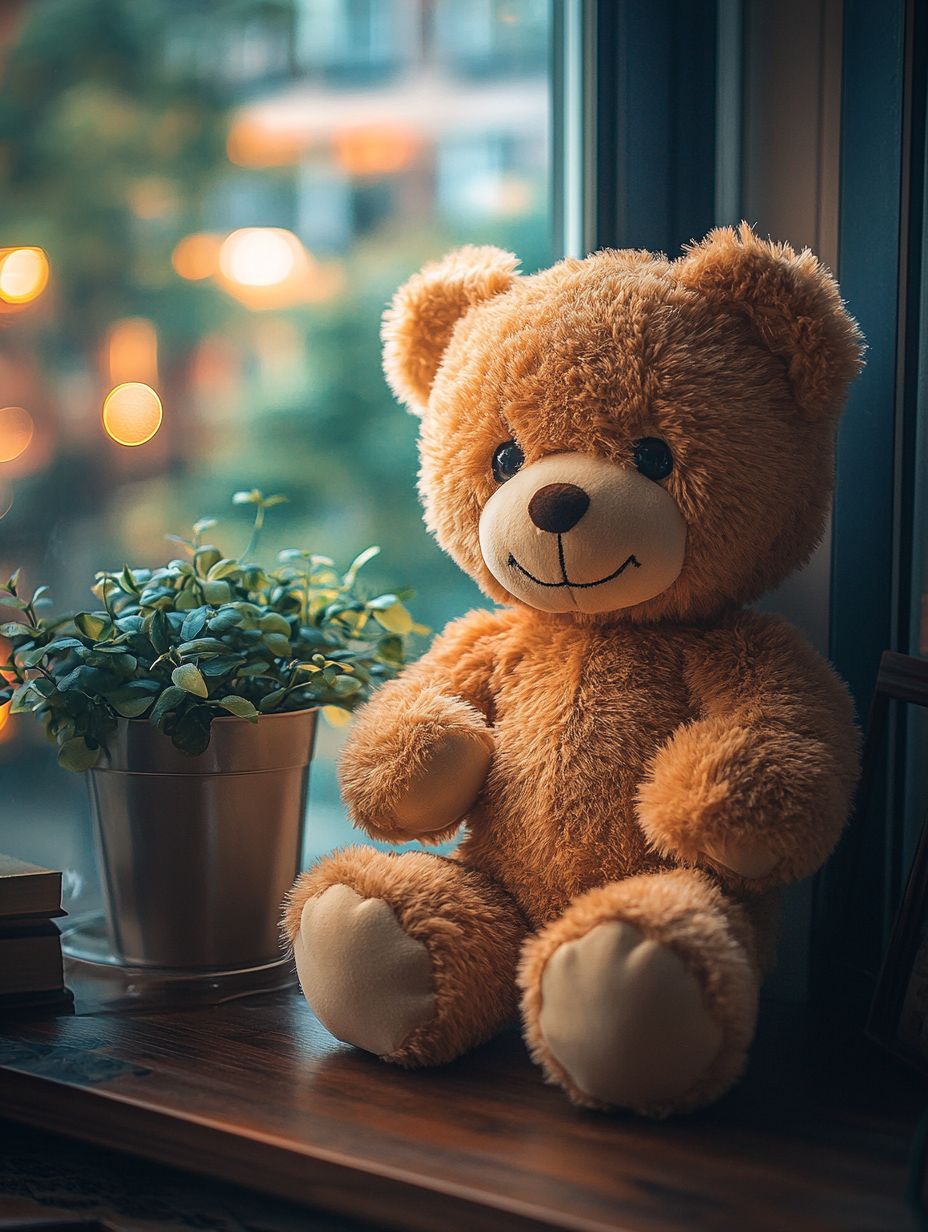
Getting Plugged into the Bear Community
There's something rather special about connecting with fellow teddy bear enthusiasts these days – social media has made it brilliantly simple to find your tribe. Whether you're chatting with collectors who remember picking up their first bear at Woolworths or swapping stories about weekend charity shop discoveries, there's a whole world of bear lovers waiting to welcome you.
The online collecting scene is absolutely buzzing. You might stumble across a proper bargain on one of the Facebook groups like "British Bear Collectors" or find yourself lost in fascinating conversations on The Teddy Bear Club International forums.
I've noticed the most interesting finds tend to crop up when you least expect them – perhaps a pristine Merrythought bear spotted at a car boot sale in Devon, or a rare Dean's piece tucked away in a charity shop window.
Worth keeping an eye on:
- Local collectors' Facebook groups (brilliant for marketplace listings)
- Specialist forums where members trade at decent prices
- YouTube channels focusing on restoration (dead useful for beginners)
- Instagram accounts showcasing British classics
The lovely thing about joining these communities is how quickly you develop an eye for quality. Before long, you'll find yourself spotting potential treasures in charity shops and knowing instinctively whether that £5 bear might be worth ten times as much.
Mind you, some of the most cherished bears aren't worth much at all – except to the lucky soul who's given them a home.
Best of all, you'll meet some genuinely passionate collectors who'll give you a shout when something special crosses their path. Proper friendships often blossom over a shared love of these furry companions.
Negotiate at Flea Markets
Flea markets are brilliant hunting grounds for thrifty teddy bear collectors – rather like charity shops but with more chance to haggle. While browsing the stalls at your local car boot, you might stumble upon some proper vintage gems that just need a bit of love to shine again.
The art of bargaining is half the fun, really. Most sellers expect a bit of back-and-forth, so don't feel awkward about it. I usually ask what they're after, then offer around 60% – though sometimes I'll go higher if it's something special. More often than not, you'll meet somewhere in the middle, which suits everyone quite nicely.
The real treasures are those bears from the 50s and 60s – keep an eye out for old labels and traditional joints that suggest you've found something authentic.
It's worth bringing along a few essentials – a small torch for checking stitching and a tape measure can be lifesavers. I find keeping fivers in different pockets helps me stick to my budget without getting carried away.
Should you spot any wonky arms or loose stuffing, mention it gently – most sellers appreciate honesty. Just make absolutely certain there's no sign of moths or woodworm before you hand over your cash. Those little blighters can wreak havoc on even the most cherished collection.
Check Estate Sales Weekly
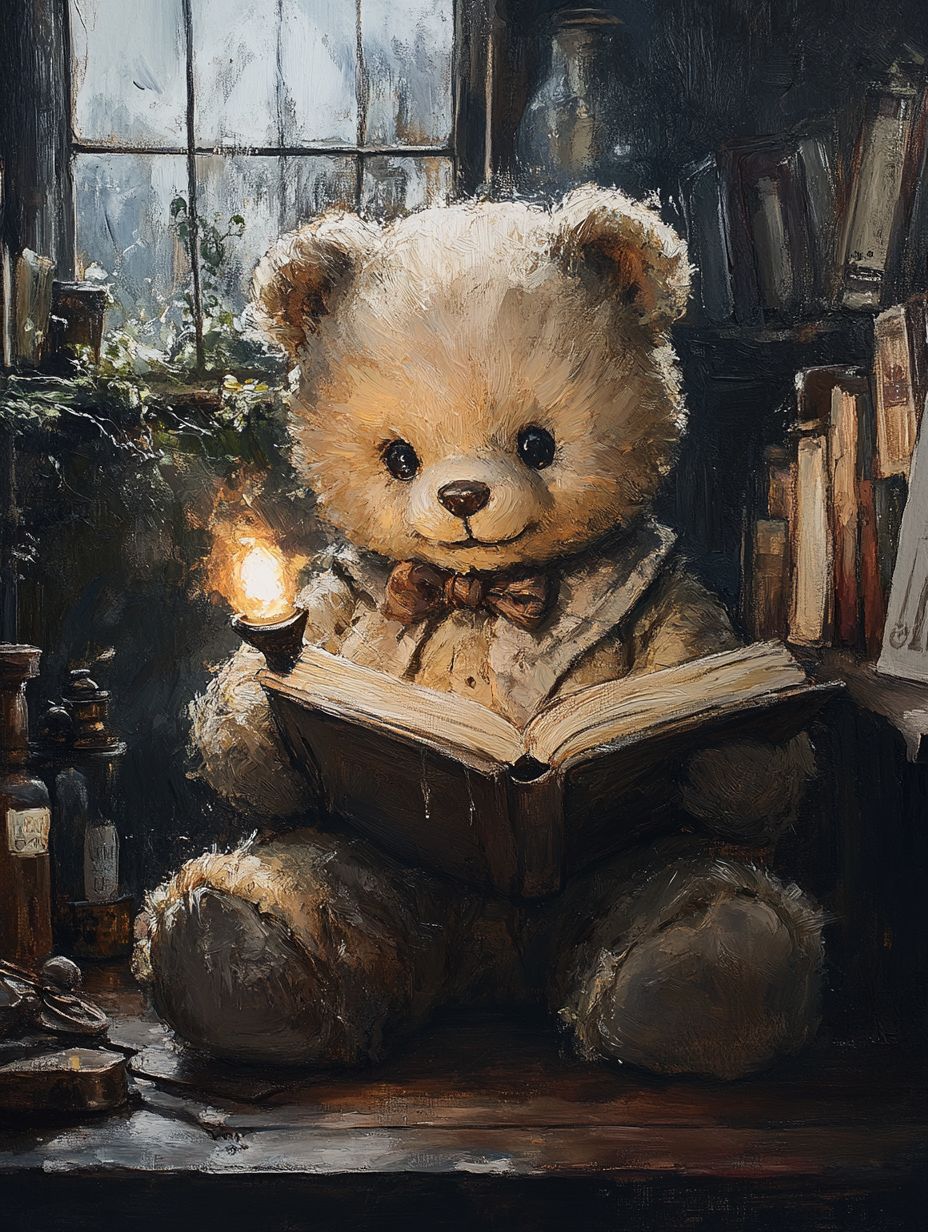
Estate sales are absolute treasure troves for teddy bear enthusiasts who fancy building their collection without breaking the bank.
It's remarkable what turns up in British homes – particularly those charming vintage bears tucked away in dusty lofts and forgotten wardrobes. Half the fun is that sellers often haven't the foggiest about what these old bears are truly worth.
The best finds tend to materialise at weekend sales, so keep your eyes peeled on local papers and estate sale listings. Mind you, getting there early makes all the difference – I'd suggest arriving a good half hour before doors open. Might seem a bit keen, but pop a flask of tea in your bag and you'll be sorted for the wait.
Essential bits to remember:
- Bring a proper torch – some of these houses can be terribly dim
- Have a thorough look for maker's labels, especially on bears in the £50-£200 range
- Don't be shy about spotting bears in old family snaps – they might be lurking somewhere in the house
The real gems often surface in the most unlikely spots – bedroom cupboards and old storage boxes are particularly promising.
You might stumble upon absolutely splendid specimens from the 1960s or even earlier. Do bear in mind though that these sales can be rather poignant affairs – many of these cuddly companions have been part of families for generations.
Learn Basic Restoration Skills
Getting started with restoration is a brilliant way to breathe new life into car boot sale bargains. There's something deeply satisfying about transforming a tatty old teddy into a cherished piece – and it needn't cost the earth. While professional repairs might set you back £30 or more, most basic fixes require nothing more than a few quid's worth of bits and bobs from your local haberdashery.
| Repair Type | Tools Needed | Difficulty |
|---|---|---|
| Loose Joints | Steam iron, needle | Moderate |
| Missing Eyes | Glass eyes, pliers | Simple |
| Worn Fur | Wire brush, conditioner | Advanced |
Wobbly limbs are typically the easiest to sort out. Pop out the old thread, give the joint a proper clean with surgical spirit, and re-string with sturdy cotton thread. Matted fur can usually be rescued with a gentle grooming using a soft-bristled brush, though do take care not to be too vigorous. Best leave the really valuable bears to the experts – there's nothing worse than botching a repair on a precious antique. Instead, stick to practising simpler jobs like securing loose heads and mending small tears. Perfect these basics, and you'll be well equipped to tackle most charity shop finds with confidence.
Trade With Fellow Collectors
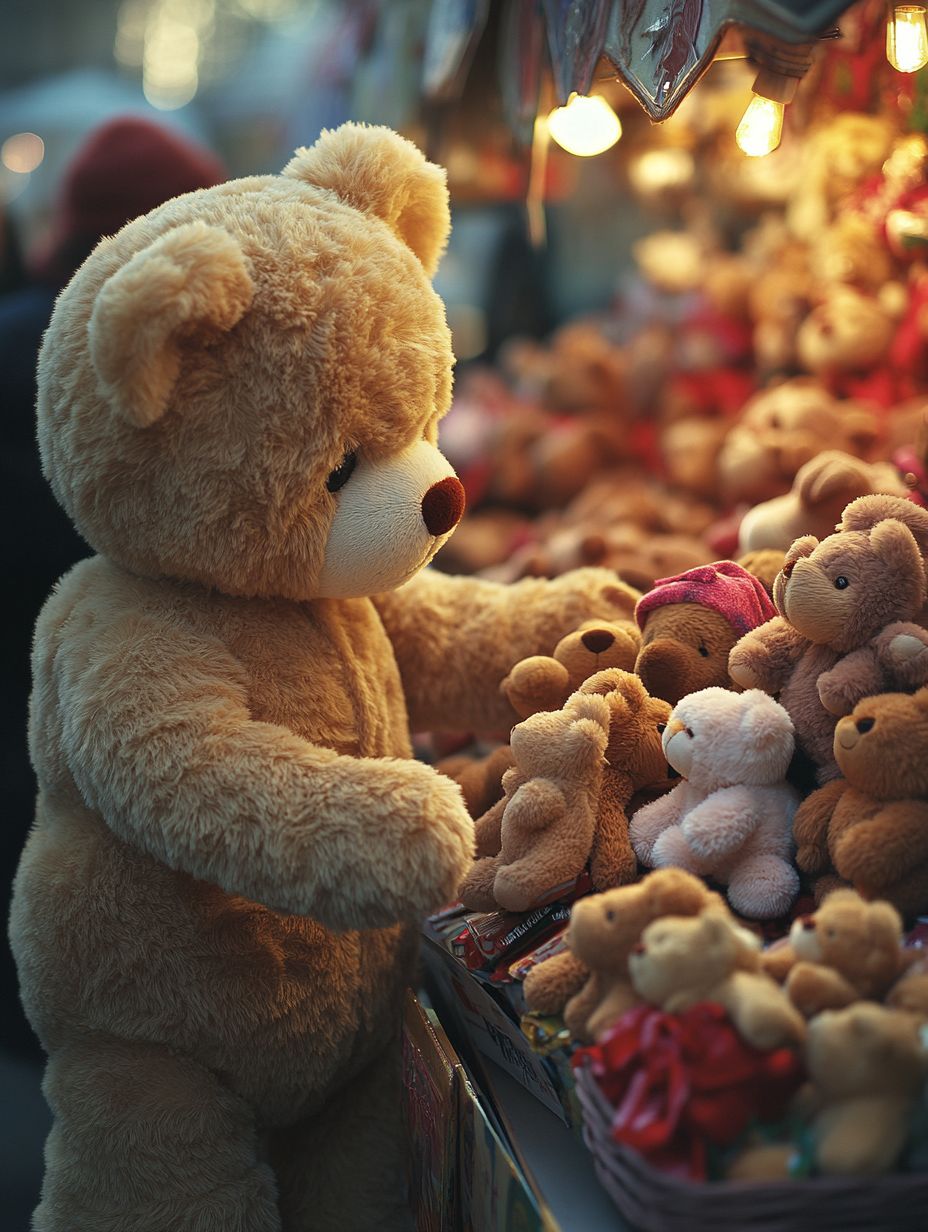
Swapping Bears: A Collector's Guide
There's something rather special about trading with fellow collectors – it's arguably the savviest way to grow your collection without breaking the bank. At meets and fairs across Britain, you'll find enthusiasts keen to swap their duplicate bears. It's brilliant, really – like having access to a treasure trove where cuddly companions are the currency.
Getting started with trading isn't terribly complicated, but it helps to be organised. A decent photo catalogue of your tradeable bears makes life easier, complete with measurements and any quirks or distinguishing features. Local collectors' groups are brilliant for finding potential swaps, and social media has made it even simpler – there are loads of active Facebook communities where British collectors gather to show off their latest finds.
The Hugglets Bear Festivals in London are absolutely fantastic for meeting other collectors face-to-face. There's nothing quite like handling the bears in person and having a proper natter with fellow enthusiasts.
Mind you, it's worth keeping a wish list handy – it's dead easy to get carried away when surrounded by so many lovely bears!
Do be careful though – inspect potential trades as thoroughly as you'd a purchase. Nobody wants to discover they've swapped their mint condition 1980s Merrythought for something that's more well-loved than advertised.
A bit of due diligence goes a long way in ensuring everyone's happy with their new furry friend.
Conclusion
Starting a teddy bear collection doesn't mean emptying your wallet – quite the opposite! Speaking from experience, some of my favourite finds have come from the most unlikely places. There's something rather magical about spotting a forgotten old bear tucked away in a charity shop or car boot sale, just waiting to be discovered.
Whilst everyone else seems obsessed with tracking down pristine collectibles at astronomical prices, I reckon the real treasures are hiding in plain sight. Local jumble sales, church fetes and even social media marketplace listings can yield absolute gems if you're willing to have a proper rummage. Mind you, it's worth learning a bit about restoration – a tatty bear going for a fiver might clean up beautifully with some careful TLC.
The collecting community's quite lovely, actually. Pop round to any collectors' fair and you'll find enthusiasts happy to share tips about spotting bargains and authenticating finds. Just don't get caught up in the occasional competitive atmosphere – there's no shame in walking away when prices drift beyond your budget. After all, half the fun is in the hunt, isn't it?


